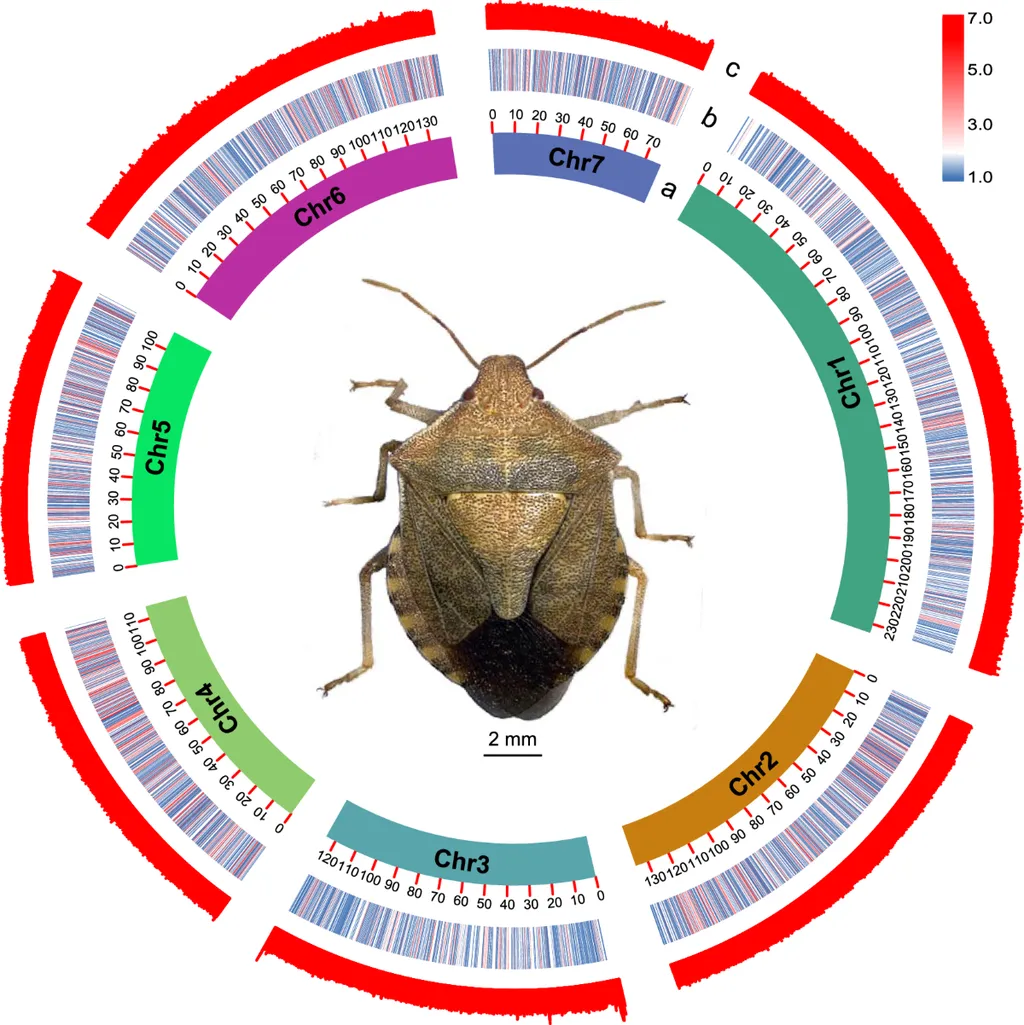In the realm of agricultural biocontrol, a significant leap forward has been made with the publication of a chromosome-level genome assembly of the predatory stinkbug, Eocanthecona furcellata, in the journal *Scientific Data*. This breakthrough, led by Jingdong Cao of the Chuxiong Branch of Yunnan Tobacco Company, opens new avenues for understanding and leveraging this natural pest controller.
Eocanthecona furcellata, a member of the Pentatomidae family, is a formidable predator of various notorious insect pests. Its role in agricultural and forestry ecosystems has been pivotal, making it a prime candidate for biocontrol applications. The genome assembly, achieved using PacBio HiFi long-read sequencing and Hi-C scaffolding technologies, spans 1.03 gigabases, with an impressive contig N50 of 2.35 megabases and a scaffold N50 of 135.69 megabases. This high-quality assembly achieved 97.0% BUSCO completeness, ensuring a comprehensive representation of the bug’s genetic makeup.
“The genome assembly provides a foundational resource for advancing research on predatory bug biology,” said Jingdong Cao, the lead author of the study. This resource is crucial for exploring genetic adaptations for digestion, molecular mechanisms of prey detection, and optimizing biocontrol strategies through functional genomics.
The genome assembly resolved into 7 pseudochromosomes, representing the full karyotype of E. furcellata. Repeat elements constitute 52.07% of the genome, and 15,802 protein-coding genes were annotated, with 90.72% being informatively assigned. This detailed genetic map is a treasure trove for researchers aiming to understand the biological intricacies of this predatory insect.
The implications of this research are far-reaching. By understanding the genetic underpinnings of E. furcellata, scientists can develop more effective biocontrol strategies. This could lead to reduced reliance on chemical pesticides, promoting sustainable agriculture and forestry practices. The commercial impact on the energy sector is also noteworthy, as sustainable agricultural practices can contribute to a more resilient and eco-friendly energy supply chain.
“This high-quality genome provides a foundational resource for advancing research on predatory bug biology,” Cao emphasized. The study not only enhances our understanding of E. furcellata but also paves the way for innovative applications in pest management. As we delve deeper into the genetic adaptations and molecular mechanisms of this predatory stinkbug, we unlock new potential for sustainable and effective biocontrol solutions.
Published in *Scientific Data*, this research marks a significant milestone in the field of agricultural biocontrol. The detailed genome assembly of Eocanthecona furcellata offers a robust platform for future studies, driving advancements in pest management and sustainable agriculture. As we continue to explore the genetic landscape of this remarkable insect, the possibilities for innovation and impact are vast and promising.

